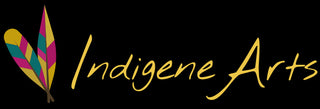
Our 2nd Consultation with Native Canadian Artists
The overall feedback at our second consultation with Indigenous artists was consistent with our first consultation, even though we had a few new people attending this time.
Everybody agreed that there is a need for an Indigenous marketplace. Some people commented that it was “Long overdue” and that a marketplace specific to Indigenous Art and Crafts would provide a “greater reach to a larger pool of potential customers”.
Everyone in the group was interested in making International connections and to have the opportunity to collaborate with Indigenous artists from other countries.
People talked about how they have met Indigenous people from other cultures in the past and that their experience was always positive and respectful.
"Exchange of information is important, that’s how we learn things"
“We could teach each other how to be sustainable.”
“We want to share knowledge and collaborate with other artists.. see how they make things. That would be fascinating to me”. 
Authenticity of Indigenous products was discussed at length this time again. People want to see only authentic items sold on the marketplace. That would be beneficial to Indigenous artists, as they often have to compete with fake and mass-produced items.
When you buy authentic items, they come with the story, it's a conversation piece, it brings people together - not like those mass-produced items you buy in a store. “I don’t like competing against machines”. 
Elena Brakhnova, Marketplace & Community Manager, UnCommon Thread
Educating buyers about Indigenous culture and values was important to artists too. The Indigenous system of values is very different from traditional values in Western culture. It’s more about community and spirituality than just time spent and money. It’s hard to calculate price for a piece of Indigenous art that is made by hand and cared for Indigenous cultural practices. If you factor in all of the labour and Indigenous rituals, it could be hundreds of hours to make an item that non-Indigenous buyers would not recognize as being special. They would miss the point of the item having purpose and the meaning of the time spent making it.
Indigenous products come with a story/legend/spiritual teachings about their clan, colours etc. (You don’t learn that in school). Sometimes it’s done ceremoniously, at different times of the year. How do you price that?
The marketplace would definitely create an opportunity to educate people. “We’ve never been given a chance or an opportunity to share … (our knowledge)”. Because of that, Indigenous artists don’t always get the recognition they deserve and feel discouraged.
I certainly hope that by giving Indigenous artists a dedicated space to showcase their unique products to the world, we'll educate general public about Indigenous culture and traditions, while addressing many other issues raised at this meeting.
Author: Marina Korneeva

